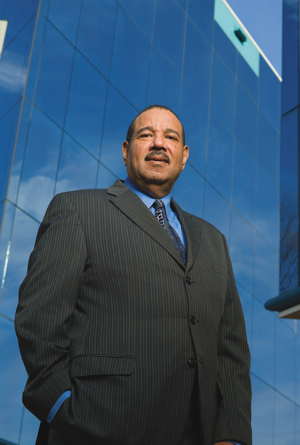New Jersey CIO E. Steven Emanuel On Staffing and Peer Networking
Since joining New Jersey in December 2011, state CIO E. Steven Emanuel has overseen a reorganization of the Office of Information Technology. He discussed those changes and the culture of collaboration that thrives in the public sector with StateTech Managing Editor Amy Schurr.
STATETECH: How did you reorganize New Jersey’s Office of Information Technology?
EMANUEL: OIT was realigned to create a distinct separation of its dual missions. Day-to-day oversight and management are now managed separately from governance, strategic planning and general administration.
OIT now has a chief operating officer who is charged with leading the delivery of production services and the services of four affinity groups — Administrative Services, Business and Community, Health and Social Services, and Public Safety.
The Office of the CIO is responsible for statewide technology governance and strategic planning; this includes technology outreach, statewide IT policies, planning and standards development, the enterprise project management office, as well as enterprise security.
STATETECH: How does the realignment improve IT services?
EMANUEL: The realignment created two “towers of excellence.” Now that enterprise IT governance and strategic direction are no longer directly dependent on OIT’s operational challenges, OIT is positioned to revitalize relationships between the agency and IT delivery groups in all executive branch agencies with a goal of ensuring that decisions and priorities are developed through collaborative synergies and serve the administration’s core mission objectives.
In addition, OIT is working to develop a strategy to improve awareness and align agency continuity plans in partnership with the Office of Homeland Security and Preparedness and the Office of Emergency Management.
STATETECH: What insight from your stint in local government aids you in your state IT post?
EMANUEL: Working in local government taught me that collaboration with other state and local public entities is a valuable tool for success. The ability to call on other IT leaders to talk through or replicate great solutions removes a pattern of constant discovery and frees up valuable time that could be better used in those areas that are unique and are in true need of exploration, analysis and decisions.

Credit: John Emerson
Read how E. Steven Emanuel and New Jersey handled the aftermath of Hurricane Sandy here.
Also, government-focused, peer-to-peer networks or communities such as the Center for Digital Government or the Public Technology Institute are of tremendous value and are something many private-sector IT leaders don’t necessarily have available.
I don’t think my success as a CIO in the private sector would have be nearly as high simply because of the fact that I’m able to ask questions of colleagues whom I trust and get good quality information and best practices back.
STATETECH: Within the state, how have you knocked down silos and collaborated with other agencies or across jurisdictions?
EMANUEL: We established the statewide CIO Collaboration Council as a platform to increase collaboration among agency CIOs or IT directors. In addition, OIT is using events like the 2012 New Jersey Digital Summit to engage with local and county government to identify best practices or areas for improvement or streamlining. Many of the steps the state has undertaken to modernize the IT purchasing process were initially conceptualized at peer-to-peer events.
STATETECH: How are you working with colleagues outside the state?
EMANUEL: After Sandy, I had a tall list of colleagues around the country that pledged help. Hawaii CIO Sonny Bhagowalia offered a program that we might adopt in the near future for performing damage assessments.
For an interview with Bhagowalia, see Say Aloha to Hawaii’s First CIO and a Technology Transformation.
Prior to the storm, we started up what I’m going to the call the Metropolitan CIO Collaboration Council, which includes the CIO for New York, Pennsylvania, Delaware, Maryland and myself. Interestingly enough, one of the topics discussed was cross-border fleet movement and challenges that occurred in other storms.
As a result of sharing this information several weeks before, we came up with a business process during the storm that would expedite fleet movement through tolls. We shared that with Delaware and they replicated it. It’s not always about technology, but knowing the business process and looking at technology to fill the gap and make improvements.








